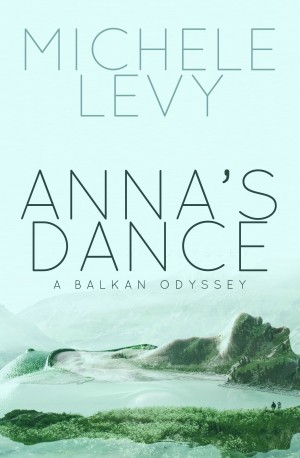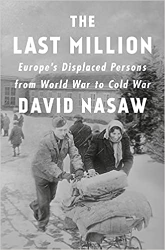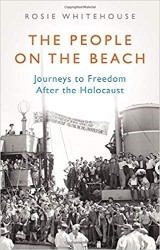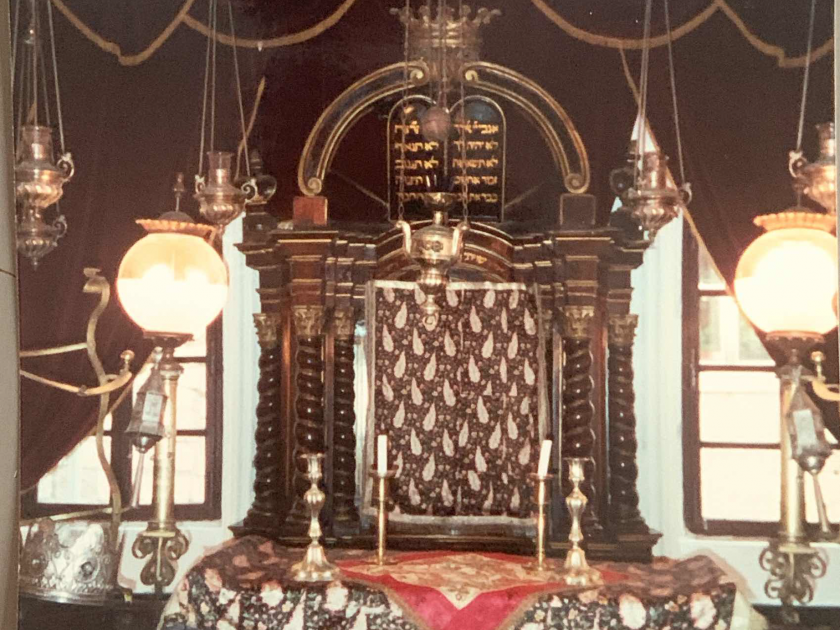
The sanctuary of the Dubrovnik synagogue, courtesy of the author
My novel, Anna’s Dance: A Balkan Odyssey, traces the hitchhiking trip through the Balkans I made as a student in 1968. But my love for the region began earlier. After leaving Bryn Mawr in my freshman year, I worked for a D.C. agency that helped the State Department arrange and oversee the US visits of foreign diplomats. At nineteen, I met many fascinating Yugoslavs, including a formidable former female Partisan, and the engineer who headed the post-earthquake rebuilding of Skopje. Their stories intrigued me. At George Washington University, where I had resumed my studies, Howard Morley Sachar’s course on Jewish History moved me to explore Balkan history more fully.
Jews lived in the Balkans from at least the first century CE, till the early twentieth century; waves of Sephardic and Ashkenazi Jews came to the area — some as traders, many to flee persecution farther west. Synagogue ruins and graves along the Adriatic Coast place Jews of the late Roman Empire in Croatia nearly two thousand years ago. Evidence shows, too, that Byzantine oppression caused some Jews to relocate even farther east, to the Kingdom of Bulgaria. With the Crusades and the rise of usury, many Jews from Northern Europe spread southeast to avoid pogroms, and from 1492 the Spanish Inquisition spawned Sephardic Jewish migration to the Ottoman Empire. By the late nineteenth and early twentieth centuries, with political antisemitism on the rise in the Austro-Hungarian Empire, many Ashkenazi Jews again looked eastward for safety.
But the fate of Balkan Jews, as with their Western counterparts, depended on the disposition of their local governments. In the seventh century, when the Avars, warriors from the Caucusus, attacked Split, by then a Byzantine city on the Dalmatian coast of Croatia, the Palace of Diocletian gave Jews sanctuary. Yet records also show oppression of the kinds seen in the West. Still, many Jews flourished despite these restrictions. Dubrovnik, for instance, once part of the Venetian Empire, houses Europe’s second oldest synagogue, the oldest still in use. It was established around 1352 on “Ulica Žudioska” (Jewish Street), a narrow, cobbled street within the walled Old City, which contained, beside homes and churches, the Jewish ghetto. This tiny, beautiful second-story worship space now boasts a membership of twenty or so, one of whom — a friend — brought me there in 2000. Having fled to Italy during the Bosnian War — to avoid her sons’ conscription into Croatia’s nationalist army — she has kept her three-hundred-year-old Dubrovnik home and belongs to that Jewish community.
But the fate of Balkan Jews, as with their Western counterparts, depended on the disposition of their local governments.
A radical change for Jews came in 1299, when the Ottoman Turks conquered Byzantium and launched their vast empire. While classifying Jews, along with Catholics, Roma, and Orthodox Serbs, as raya, second-class citizens, the Turks safeguarded their minorities. This assured Jews better treatment than they had experienced under Byzantium or in the West. With Muslims, they were exempt from the devshirme, the “child tax,” which every four or five years conscripted young Christian boys, mostly Serbs, brought them back to Istanbul, educated them, and made from them a military and bureaucratic force. The Bridge on the Drina, Ivo Andrić’s Nobel-prize-winning 1945 novel, explores five hundred years in the life of a multi-ethnic Bosnian town within the Ottoman Empire.
But in the early nineteenth century, as Balkan citizens imported Western nationalism through Romantic literature and studies abroad, the Ottoman Empire weakened. Violent resistance flared in Serbia, Greece, and Albania. Thereafter, bands of forest-dwelling rebels regularly ambushed Turkish soldiers. By 1888, Serbia became independent and Austria-Hungary added Bosnia to its domain. Initially, this boded well for Jews, but that nationalism often took on an antisemitic hue.
Croatian history offers a window on the history of its Jewish community. Croatia, which embraced Catholicism in the seventh century, took Hungary as its overlord in the twelfth century, a link that endured until the end of the Austro-Hungarian Empire after World War I, when it joined the Kingdom of Serbs, Croats, and Slovenes. But by the mid-nineteenth century, a Croatian nationalist movement had arisen. Eventually led by a virulently antisemitic Jewish convert, the movement proclaimed Croatia’s ethnic purity. Between the world wars, homegrown Croatian nationalists trained in Italy with Mussolini’s fascists and, in 1941, this group, who named themselves the Ustasha (Insurgents), took control of Croatia and acquired Bosnia from Germany. That year they implemented Hitler’s race laws. With village massacres and the fourth largest concentration camp complex in Europe, Jasenovac, the Ustasha murdered eighty-five percent of the Jews within its territory and boasted of its success. German-occupied Serbia followed suit, rigorously enacting the race laws. Bulgaria, having granted Jews full citizenship in 1880, joined the Axis. But when Germany demanded its Jews, Bulgaria refused to surrender those within its boundaries, interning them instead. Nevertheless, it sent 12,000 Jews in its Macedonian territories to their deaths in Hitler’s camps — an event that figures in my novel.
The story of Zagreb’s synagogue embodies the fate of many Balkan Jews from post-World War II to the present. Completed in 1867, the synagogue became the first important building erected in Kaptol, Zagreb’s “lower town.” Hailed as a model of Moorish revival architecture, it drew many public officials and citizens to its opening and soon became a source of civic pride.
The story of Zagreb’s synagogue embodies the fate of many Balkan Jews from post-World War II to the present. Completed in 1867, the synagogue became the first important building erected in Kaptol, Zagreb’s “lower town.”
Under the Ustasha, Serbs, who outnumbered Croats in the newly combined territories of Croatia and Bosnia, were the Ustasha’s main target. But it conducted a ruthless campaign against its approximately 25,000 Jews, mandating the yellow star, confiscating property, and sending 19,000 to their deaths, either in its own or Nazi concentration camps. As for the synagogue, in 1941, Zagreb’s mayor, Ivan Werner, a butcher and Ustasha member, ordered its destruction, claiming it interfered with plans for urban development. Between October 1941 and April 1942, Ustaše demolished the building and captured the process on film, most of which they later destroyed.
Then came the post-war period, which proved no less difficult for Jews. First came Tito’s communist government, which severely restricted ethnic and religious expressions, nationalized all religious real estate (religion being the opiate of the masses), including the land on which the synagogue once stood, and in 1967 severed ties with Israel. Yet even after the fall of Communism in 1989, and Croatia’s long-dreamed-for independence, little changed for its Jews, who could not regain their property. Just eight years ago, in 2012, a report from the European Shoah Legacy Institute found recovering Jewish property in Croatia problematic:
While Croatia has enacted laws governing the restitution of communal and private property nationalized during the communist period, the Jewish community has recovered few properties using the established procedure. In addition, the laws relating to the restitution of confiscated private property — in one way or another –exclude from eligibility virtually all Jewish Holocaust survivors who were formerly property owners.
The Institute found that Croatia’s government returned only 15 of 135 claims submitted by Jewish communities for communal buildings and land by the filing deadline of ten years previously, that “no substantive progress with respect to the return of confiscated Jewish communal property for years,” and finally, that while “discrete agreements between the government and individual religious communities — such as with the Catholic Church — have led to the return of some confiscated communal property…no such government agreement exists with the Jewish community of Croatia.” These findings reveal the climate within which the tiny Jewish community of Croatia (some 2,000 altogether, most of those in Zagreb) has operated from 1945 to today.
Zagreb Jews long fought to memorialize and rebuild it their synagogue. But their lack of progress underscores the precarious life of Jews in a still nationalist Croatia.
Zagreb Jews long fought to memorialize and rebuild it their synagogue. But their lack of progress underscores the precarious life of Jews in a still nationalist Croatia. A tiny minority within a state that proudly sees itself as Western and Catholic, Jews have had to negotiate their identities carefully. Even as they hope to preserve their heritage, they must appear loyal Croats or risk being othered. So even the effort to commemorate the land on which the synagogue once stood, prime real estate in central Zagreb, has proven complicated. The local government and business interests have put it to multiple uses: a volleyball court, a department store, and finally a parking lot between two urban buildings.
In 1986, as communists struggled to govern an increasingly fractious Yugoslavia and regional governments began to exert more power, the Jewish Community of Zagreb (ZOZ) were permitted to place a small plaque on one of the parking lot’s adjoining walls. This tiny memorial states in Hebrew and Croatian that the Zagreb Synagogue occupied that space from 1867 until destroyed by “fascists” in 1941 – 42. While this might seem a victory, let us consider the wording. The term “fascists” cleverly obscures the actual culprits, the Ustaša. The plaque holds a faceless external enemy responsible. Moreover, since post-war Croatian history texts declare their enemy “fascists,” and spend maybe a paragraph on the Holocaust, the implied victim here is Croatia, not the Jewish community. The synagogue becomes merely collateral damage in the fascist war against Croatia rather than the specific target of a past Croatian government that touted its successes in eliminating Jews. Croatia thus evaded blame for its actions. But to secure the plaque, a token memorialization, the ZOZ accepted this language.
Still, this plaque, which I saw in 2000, demonstrates that by 1986, the ZOZ had chosen to fight for the synagogue. In that year two architects presented the ZOZ their plans for a Jewish center. The ZOZ rejected both, hoping to sponsor an international architectural competition for a synagogue and community center to draw more attention to its cause. But Zagreb’s municipal government refused to issue the papers required.
But when Franjo Tuđman became Croatia’s president in 1990, its relatively benign leadership changed once again. Echoing many Ustasha claims, arguing that Croatia’s “geographical position, fourteen-centuries-long history, civilization and culture” situated it in “the central European and Mediterranean circle in Europe” and that Serbs “are eastern peoples, like the Turks,” Tuđman was no friend to Jews. His 1989 Wastelands of Historical Reality acknowledged that crimes were committed against Croatian Jews during the Holocaust, but questioned the number of Jewish victims and cited witness testimony that Jews in Jasenovac had received special treatment, helped run the camp, and generally behaved in ways that validated antisemitic stereotypes. He likewise derided Israel and “Zionists,” warning that Jews would try to conquer the world. Still, in 1990, Zagreb’s municipal government finally issued the necessary papers for an architectural competition scheduled for January 1991. But the Bosnian Conflict intervened, and from 1991 – 1995 the country focused its attentions on what it called “the Homeland Wars.”
In 1997, it sponsored an exhibit in a downtown gallery of photos from the 1880’s titled Zagrebačka Sinagoga – Reliquae Reliquarium (Remnants of Remnants). This Latin phrase evokes the fragile existence of Zagreb’s Jews.
After Croatia’s victory in 1995, its nationalism grew stronger. But the ZOZ continued its struggle to rebuild the synagogue. In 1997, it sponsored an exhibit in a downtown gallery of photos from the 1880’s titled Zagrebačka Sinagoga – Reliquae Reliquarium (Remnants of Remnants). This Latin phrase evokes the fragile existence of Zagreb’s Jews.
At last, when Tuđman died in December 1999, a more inclusive government came to power. That same month Zagreb returned the synagogue site to the ZOZ, which resumed planning for the building’s reconstruction. Two years later it sponsored yet another exhibit, “The Synagogue and Zagreb,” in the city’s Archaeological Museum, using visual and written testimonies and the lone remaining minute of Ustasha film documenting the demolition to show Zagreb’s citizens what the synagogue had meant to the city in the twentieth-century. Through this, the ZOZ hoped to heighten public awareness and secure civic and financial support for the reconstruction.
But by this time another problem had emerged: a break-down in the Jewish community itself. When the ZOZ polled their membership and prominent non-Jewish Zagreb residents on what the proposed building should do and how it should be reconstructed, the result showed a sharp division. Some wished the synagogue to serve strictly religious purposes; others wanted a multi-functional building. Some believed it should replicate the original building; others favored a more modern design. Nevertheless, in July 2004, the ZOZ sent both the government of Croatia and the city of Zagreb a new financial plan to the government of Croatia and the city of Zagreb. Told to revise it, the ZOZ complied, resubmitting it that October and calling for another architectural competition in 2005.
But by this time it was too late. The Jewish community had officially split in two. Sixteen prominent Jews, including a local Holocaust survivor, Slavko Goldstein, and his historian son Ivo, left the ZOZ to form a new group, Bet Israel. Since its inception, Bet Israel has lobbied hard, with support from the Muslim community and the Archbishop of Zagreb, to retain the Moorish design of the original building. According to Bet Israel, only a precise replication can fully embody the endurance of Croatia’s Jewish community.
But by this time it was too late. The Jewish community had officially split in two.
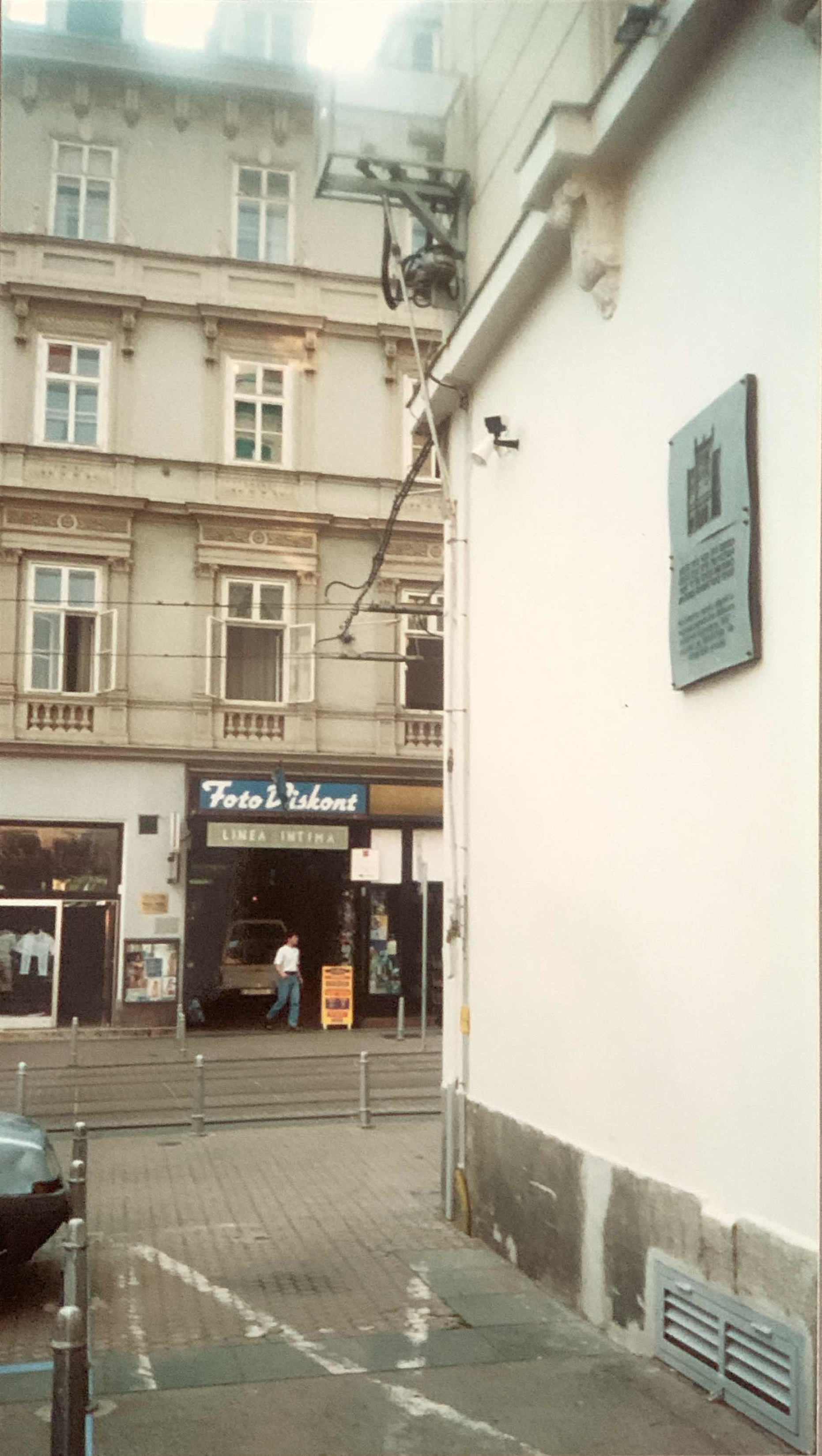
The plaque on the wall of the parking lot where once stood the Zagreb synagogue, courtesy of the author
In 2006, the Croatian government again agreed to partially finance the reconstruction, pledging to work with the city of Zagreb and both Jewish groups. But the ZOZ declared itself the only true representative, refused to cooperate with Bet Israel, and withdrew from discussions. Then Zagreb mayor Milan Bandić commented, “We’re waiting for the Jewish community to present its idea of the new object, and we’ll do our part of the job. It’s not up to us to arbitrate if there are different views within the community.” The city’s financial pledge, meanwhile, fell far short of the amount required to rebuild.
The struggle remains unresolved. So that parking lot in Zagreb testifies to both the origins of its Jewish community and its convoluted history. State and local governments, less than fully committed to a tiny minority their antecedents once sought to extinguish, make half-hearted gestures to the Jews, while the Jewish community is in disarray. According to one commentator, there exist “on the one hand, Jews who hate their fellow Jews and despise their Croatian countrymen for attempting to whitewash the Shoah and make it more palatable and more forgettable; on the other, devoted Jews and Zionists who are also patriotic Croats and who fight for their country’s war narrative”— or, as I would suggest, who fear being seen as other. If you visit Zagreb today, you can worship at either Bet Israel or the Chabad House.
Finally, if once again Croatian Jews teeter on the edge, torn between honoring their roots and placating a nation that continues to marginalize them, other Balkan Jews face a similar fate. In Serbia, sites where thousands of Jews were detained and murdered have become, despite the pleas of Jews, shopping malls and venues for rock concerts. Bosnia has not yet granted its Jews and Roma full citizenship, a human rights violation that has slowed its hoped-for entry to the EU. And Bulgaria, which alone among the Soviet satellites allowed most of its Jews to emigrate to Israel, set down harsh restrictive measures under communism. But here, at least, the tiny Jewish community, which has had no contact with their culture for years, are beginning to reestablish their roots.
To learn more about the Balkan Jews, you can read my essay on the Ustasha genocide against Serbs (which includes references to is treatment of Jews), the plight of Jews in occupied Serbia during WWII, my chapter on the politicization of victim memories in Croatia, Serbia, and Bosnia, and my novel, Anna’s Dance: A Balkan Odyssey.
Additional resources:
Levy, Michele. Anna’s Dance: A Balkan Odyssey. Black Rose Writing, 2020.
“From Skull Tower to Mall: Competing Victim Narratives and the Politics of Memory in the Former Yugoslavia,” in Simona Mitroiu, ed., Life Writing and Politics of Memory in Eastern Europe (Palgrave MacMillan, 2015): pp.202 – 221.
“A Tangled Tale: The Survival of Serbian Jews during World War II. Serbian Studies: Journal of the North American Society for Serbian Studies. 27. 15 – 41. 10.1353/ser.2013.0001.
“The Last Bullet for the Last Serb”: The Ustasha Genocide against Serbs, 1941 – 1945,” Nationality Papers, Vol. 37, no. 6, November 2009 (807−837).
Michele Levy first published works on canonical Russian and European writers. But since 1999, she has traveled to the Balkans several times and written on their literature, culture, and history in reviews, scholarly essays, and book chapters, two related directly to Yugoslavian Jews during World War II. She has also published poetry and several short stories. Anna’s Dance is her debut novel.
